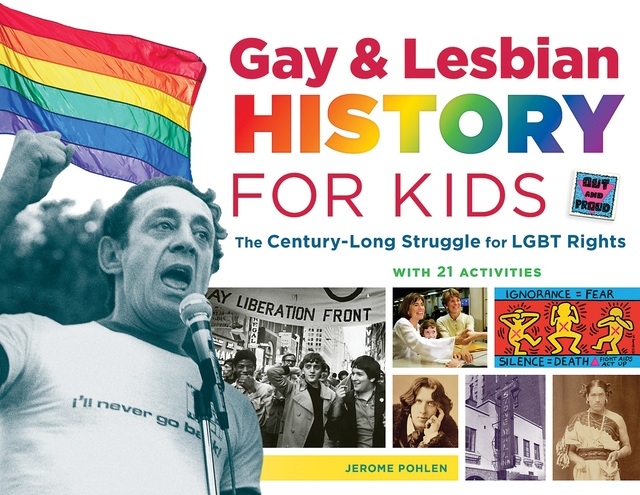Learn about LGBT history in new book for kids

Every day, you try to catch a little news.
It might be online, maybe in a newspaper, magazine or on TV, but you’re a smart kid, and you like to stay informed. Lately, you’ve been hearing a lot about gay rights and gay marriage, and you want to know more. Read “Gay & Lesbian History for Kids” by Jerome Pohlen, and your questions might be answered.
Knowing someone who’s gay, lesbian, bisexual or transgender is nothing new; in fact, history indicates that our earliest ancestors acknowledged and were “comfortable with” LGBT people. Homosexuality appears in mythology, royalty, battlefields, art (Michelangelo and Leonardo da Vinci were said to be gay) and in some religions. In North America, many beloved 19th century authors, poets and songwriters were gay or lesbian, and Native American culture embraced people who were of “two-spirits.” Transgender individuals fought in the Civil War or were pioneers or settlers. We know that LGBT individuals existed elsewhere and at other times, too, because laws were made against them.
That was especially true through the early 1900s. Though we entered “the Progressive Era” in the beginning of the century, it was anything but progressive for people who were gay. When the country was stricken by the Great Depression in the 1930s, things got even worse for the LGBT community, and many people had to hide their lives from general society.
In some ways, things got better during World War II. The government needed military personnel, and LGBT individuals, like everyone else, needed jobs, so they signed up in droves to fight for their country. Very few were denied a chance to serve, but sadly, after the war was over, many gay and lesbian personnel received “blue discharges” and were denied veteran’s benefits. Once again, LGBT individuals needed to closet themselves and their lifestyles. Not doing so could have meant arrest or worse.
And then, finally, things started to turn around. Activism in the 1960s and ’70s helped the LGBT community gain rights and support on other issues, unfair laws were changed, and many people helped make “things get better.”
I struggled with “Gay & Lesbian History for Kids,” but not for the reasons you might think. My biggest issue comes with its potential audience, vis-à-vis the content: mainly, that it contains either a lot of very advanced information for kids who are young enough to be excited about the “21 Activities” here; or a lot of silly, juvenile “activities” for kids who are old enough to handle very advanced information. Then, too, the presence of said activities may be moot, as they mostly had little to do with LGBT history.
Conversely, and to the positive, I appreciated the pre-20th century info that Pohlen offers; it was interesting, but is it enough to save this book? I don’t know. The target audience here is 9 or older, which I think is way too young. Fresh-eyed 12- to 15-year-olds may appreciate what’s inside “Gay & Lesbian History for Kids,” but hand it to a reader older than 16, and the news probably wouldn’t be good.
View publishes Terri Schlichenmeyer’s reviews of books for children and teens weekly.